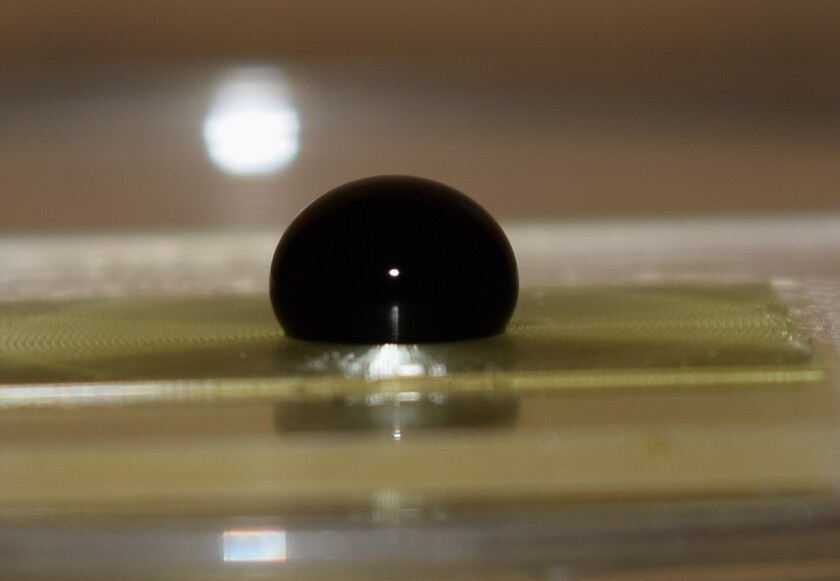3D Printing Superhydrophobic Surfaces
Applications for re-entrant structures and shaping fluids.
Superhydrophobic 3D Printing

Superhydrophobic surfaces, or water superrepellant surfaces, have been studied a lot in recent years. Especially interesting is the effect of microstructures on surfaces and their effect to make them superreppellant. Our hope is to find a cheaper and quicker method to creating such surfaces through the interface of 3-D printing.
What is "Superhydrophobic"?
The wettability of a surface, or how easily a surface is attracted to water, is described by two terms:
hydrophobic, meaning the surface tends to repel water.
hydrophilic, meaning the surface attracts water.
Such terms are characterized quantitatively by the contact angle, or angle a droplet makes with the surface when it is in contact with it. A hydrophobic surface innately has a contact angle of >90°, whereas a hydrophilic surface has a contact angle of <90°.
A surface is considered "superhydrophobic" if its contact angle exceeds 145° and the angle at which you must tilt the surface to cause water to roll off ("roll off angle") is ≤ 10°. This angle then causes water to easily roll off a surface and roll across it, which can be interesting considering many different applications including self-cleaning surfaces, droplet localization, and just hard-to-get-wet surfaces.

The Lotus Effect

credit Wikepedia.org https://en.wikipedia.org/wiki/Lotus_effect#/media/File:Lotus3.jpg
Researchers discovered and proved in the 1970's the superhydrophobic properties of the Lotus leaf. Whereas most surfaces do not exhibit high enough contact angles to be considered superhydrophobic, the leaf of the lotus flower exhibits a naturally rediculously high contact angle of up to 170°. Perplexed by this, researchers were able to attribute this innately high repellancy to the microstructures located on the surface of the plant. It has been since proved through many research groups that by adding microscopic structures to the surface of an innately hydrophobic surface can increase its contact angle to over 150°. Recently some groups have even shown that with certain tricks with small enough structures, even an innately hydrophilic surface can become both superhydrophobic and superepellent.
Our hope is to apply such techniques through a cheaper and faster method of high definition 3-D printing, and acheive such superreppelency in our substrates.